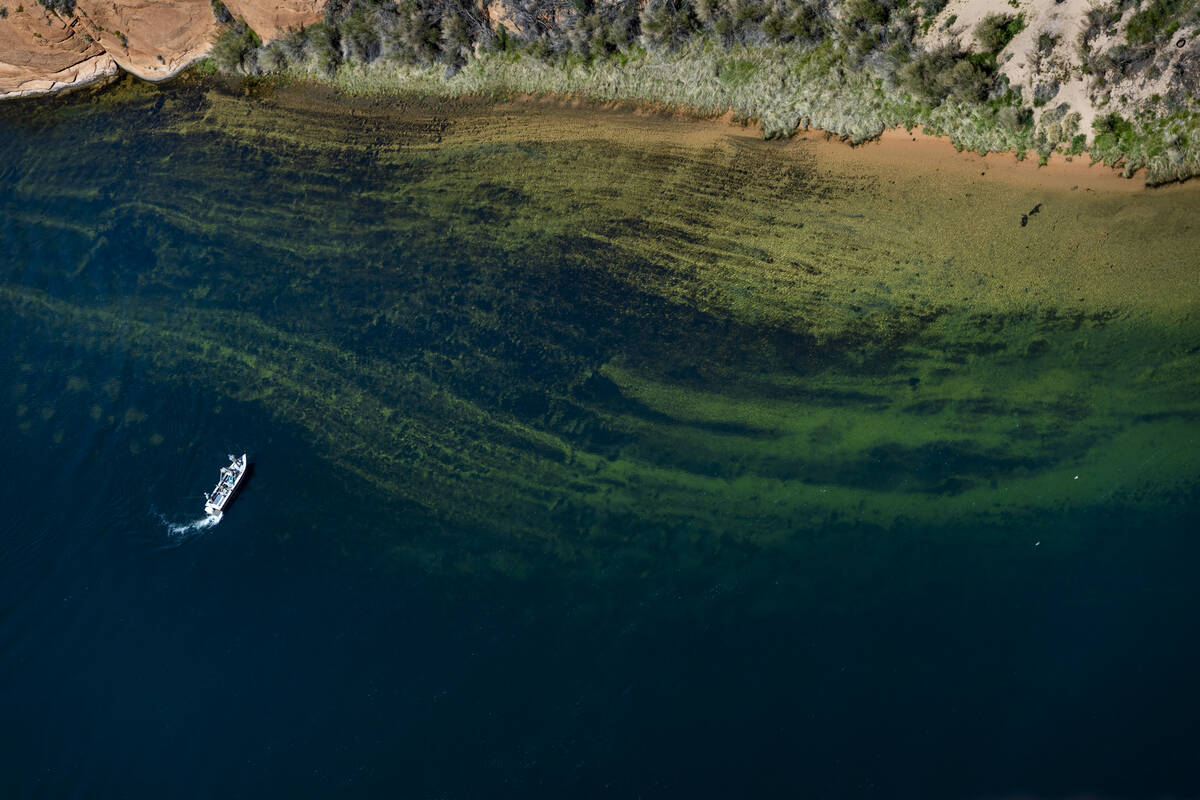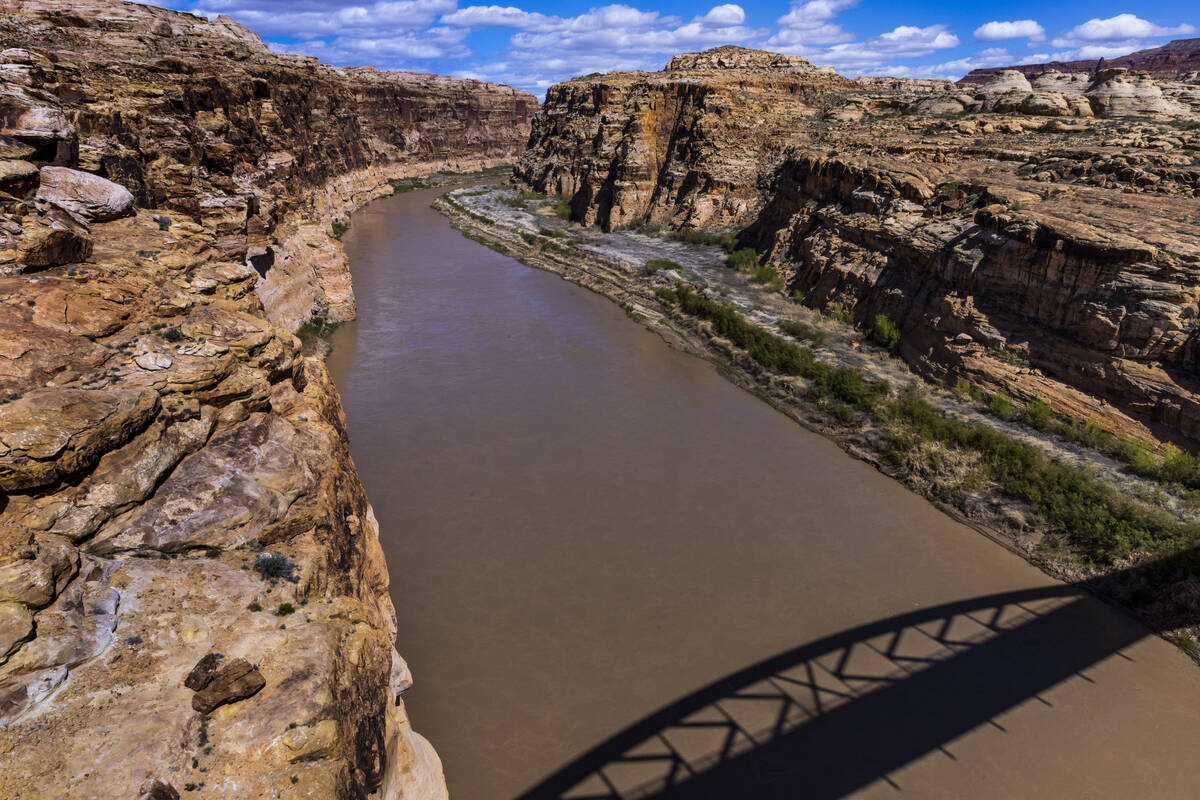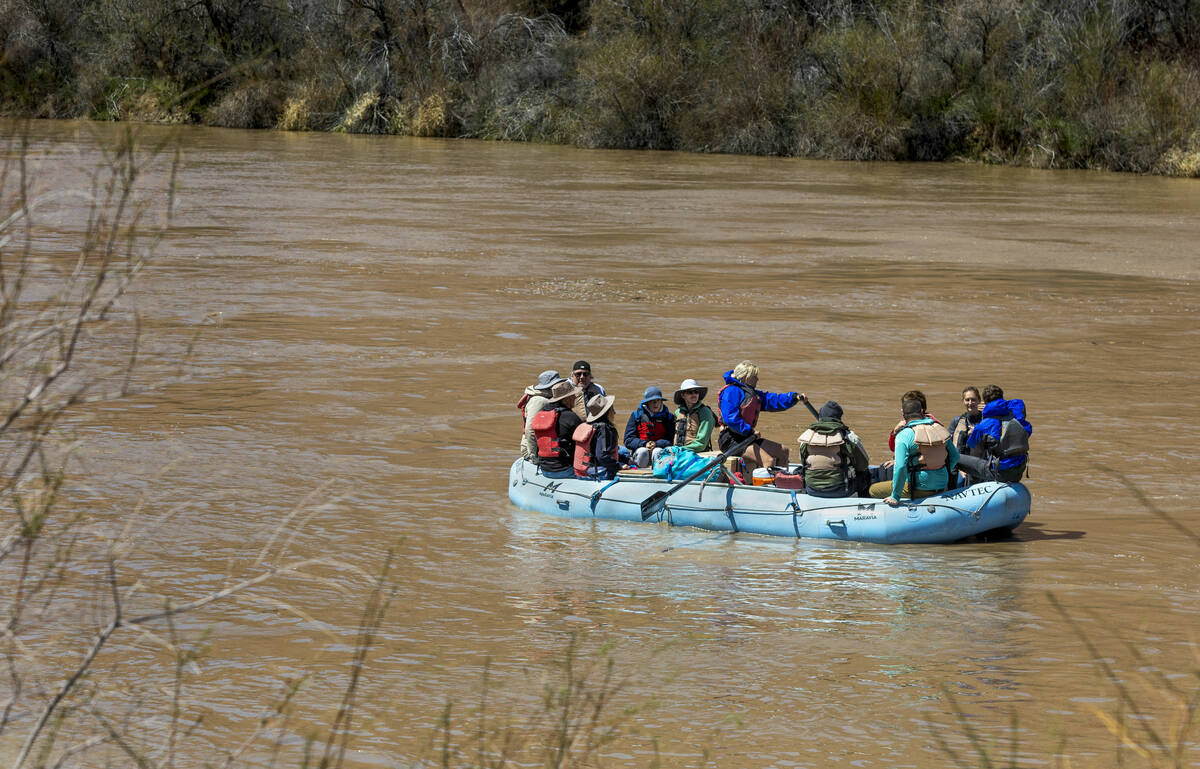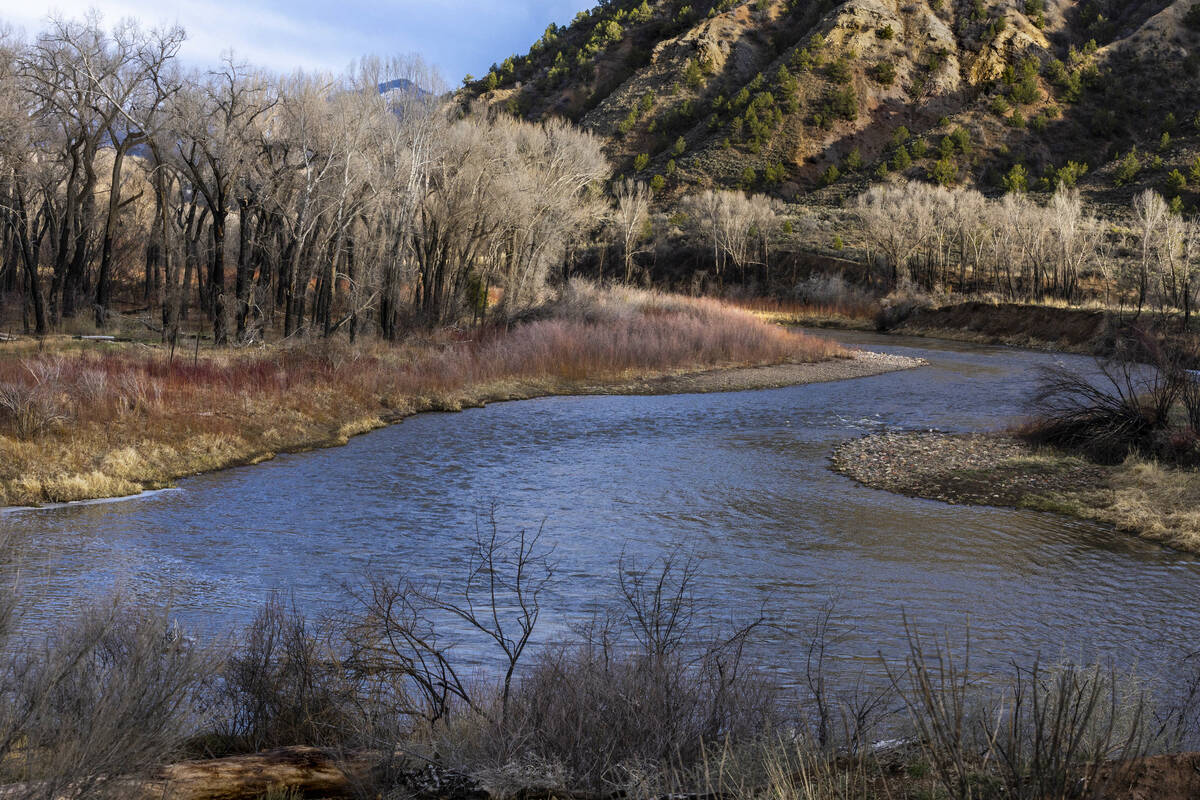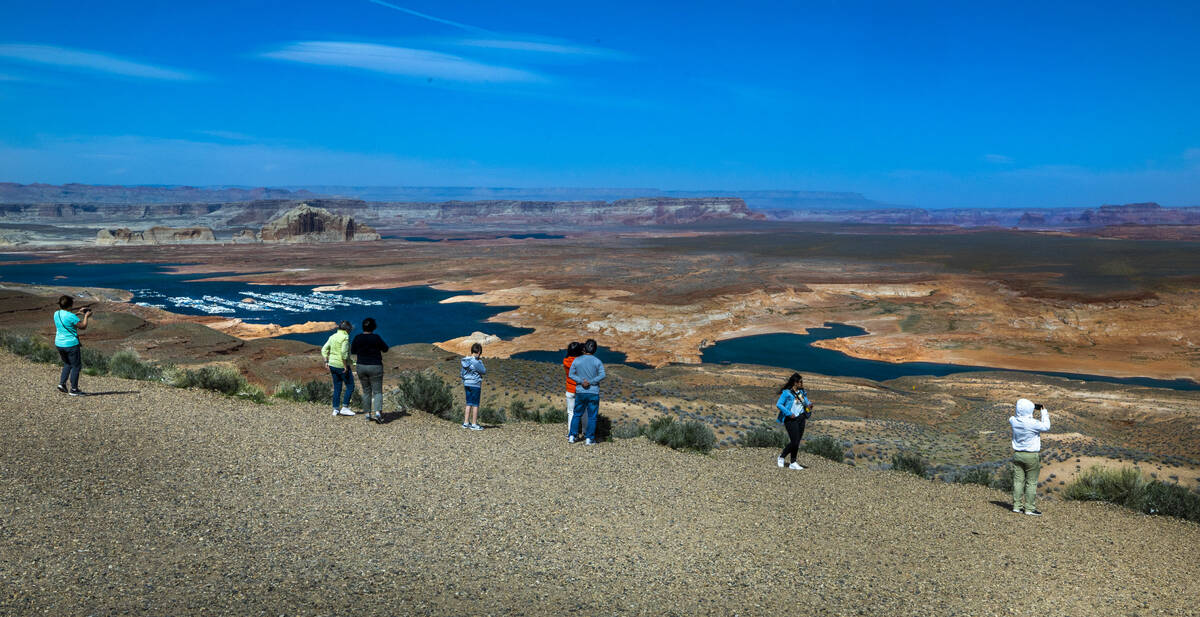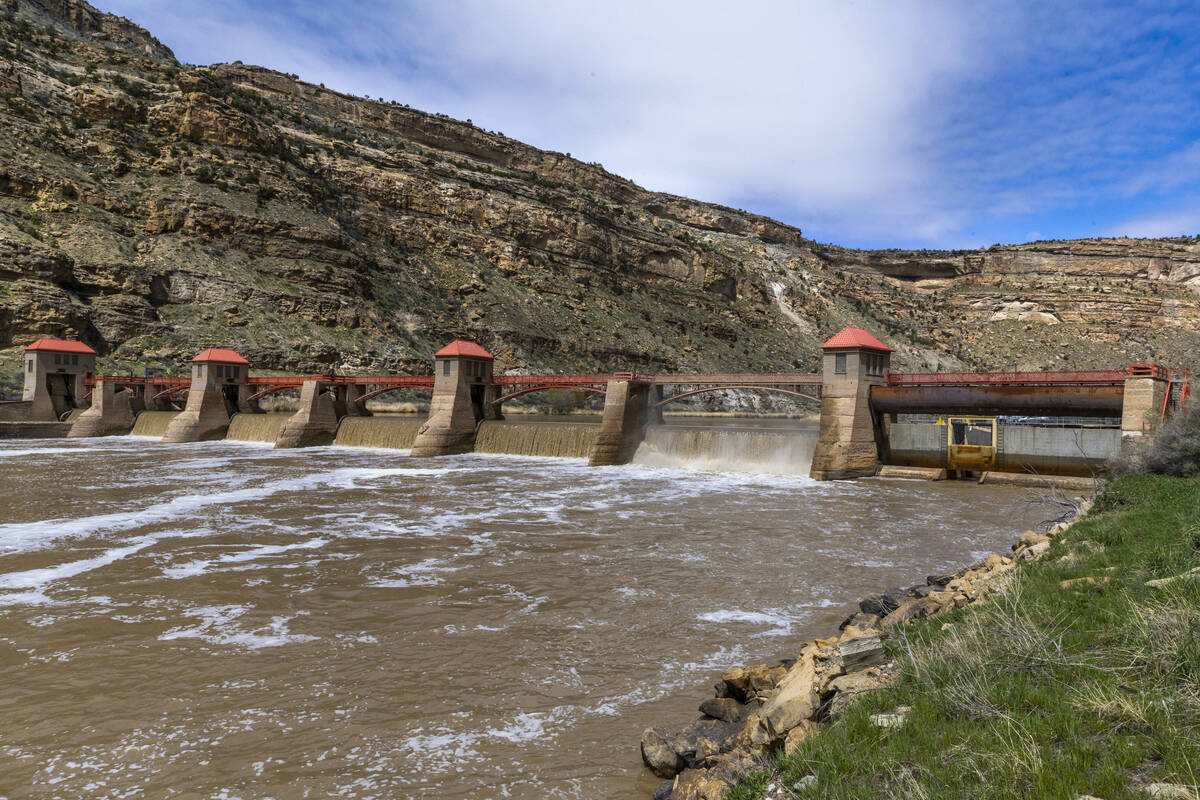Climate change has left a Lake Mead-sized void in Colorado River, study says
Rising temperatures due to climate change have sapped more than 10 trillion gallons of water from the Colorado River over the last two decades, enough water to completely fill Lake Mead from top to bottom, according to a recent study from researchers at UCLA.
Scientists and water managers alike have long pointed to climate change as a key reason for the Colorado River’s dwindling flows. But the new study, published in the journal Water Resources Research, gives us a clearer look at exactly how much human-induced climate change has depleted the river that supplies water to some 40 million Americans in the Southwest.
“The fact that warming removed as much water from the basin as the size of Lake Mead itself during the recent megadrought is a wakeup call to the climate change impacts we are living today,” Benjamin Bass, a hydrologic modeler at UCLA and the lead author of the study, said in a news release.
Were it not for climate change, the scientists said, the reservoir most likely would not have fallen to levels that triggered the first-ever federal water shortages in 2021.
The modeling the scientists used showed that the Colorado River Basin has warmed by roughly 2.7 degrees from 1880 to 2021, with the warming trend accelerating since the 1980s.
That warming trend led to a 10.3 percent reduction in the Colorado River’s flows since 2000, and the researchers said that will only get worse as temperatures continue to climb in the future. The researchers estimated that every 1.8 degrees Fahrenheit increase in temperatures can lead to a drop of 6.8 percent in the Colorado’s flows.
“Going into the future, we may get some natural variability, wet or dry swings, but this study highlights that there’s been a decreasing trend in runoff. In the long run, that’s likely to continue if greenhouse gas emissions are not reduced,” Bass said.
Adding to the research
The UCLA study builds upon previous research that showed similar losses in the river system due to climate change by including the effects of carbon dioxide on vegetation.
Researchers used land surface modeling capable of analyzing how increasing levels of carbon dioxide in the atmosphere influence the amount of water that plants and other vegetation take in and release as water vapors.
A hefty winter gave the river system a boost, with Lake Mead’s current levels more than 20 feet higher than where they were at the start of August last year. But even one great winter season isn’t nearly enough to offset more than two decades of drought on the already overtaxed river, and Lake Mead sat at just 32 percent of its capacity as of Monday.
The seven states that rely on the Colorado River have agreed to a set of proposals to reduce water use along the river in Nevada, Arizona and California over the next three years.
Meanwhile, the federal government this summer kickstarted the process for rewriting the long-term plans for governing the river after the current guidelines expire in 2026.
Sarah Porter, director of the Kyl Center for Water Policy at Arizona State University, said the study provides another way of analyzing the already-known problem of the Colorado River having less water, which will be helpful as those post-2026 negotiations move forward.
“Another way to measure the impacts of climate change is to look at the actual flows in the river. And what that study concluded was pretty consistent with what the basin has experienced,” Porter said.
Matching demand to supplies
The original 1922 compact that has governed allocations along the river assumed flows of roughly 15 million acre-feet a year. Flows since the current drought started around the year 2000 have averaged closer to 12.5 million acre-feet, but withdrawals from the river have remained relatively the same, exacerbating the problem along the basin and driving its storage reservoirs in Lake Mead and Lake Powell to record lows last year.
But the states should be prepared for the situation to get worse, said Eric Kuhn, a retired former general manager of the Colorado River Water Conservation District.
“This study is one more in the body of evidence showing the need to be fully prepared for less water than we’ve allocated,” Kuhn said.
A separate study released in June, co-authored by Kuhn, showed that the states would need to cut their collective use by 1.5 million acre-feet a year just to keep the system from falling further. To actually refill the reservoirs, states would need to cut up to 2.5 million acre-feet a year — or nearly the amount of water Arizona is normally entitled to from the river.
Kuhn said basically all of the states in the basin recognize the need to cut at least 1.5 million acre-feet in collective use each year. But deciding which states get cut, and to what degree, remains the major hurdle.
“I’m an optimist in the long run, but I don’t know how many lawsuits or crises there will be before they get to that solution,” Kuhn said.
Contact Colton Lochhead at clochhead@reviewjournal.com. Follow @ColtonLochhead on Twitter.



